The Ever Changing World of the
DIT and Digital Cinematography.
As the 10th anniversary of
the Red One Cinema camera approaches, I thought it would be a good
time for an overview of the changing roles of the DIT and
Cinematographer in 2016.
The purpose, other than an overview of
the recent changes in technology and practice is to bring more
awareness to the current application of the DIT and to aid the
progression of cinematography today.
The role of the DIT (Digital Imaging
Technician) is one of the most ill-defined roles in cinematography,
which is as equally surprising as it is unsurprising. It's surprising
as the role has been around (in current present form) for roughly 10
years - essentially since the introduction of the Red One Cinema
camera in 2006. It is unsurprising as the nature of technology and
budgets have developed at such an alarming rate that dramatic changes
to duties and expectations have arisen. Really, the role has been in
flux since its earliest days and continues to do so, making it very
hard to define.
Starting Out
My first introduction to the Red camera
was in very early 2007. It had not been officially released then but
a lot had been written about its potential on the internet. At that
time I'd been working between being a 2nd AC and Video
Assist Operator on 35mm commercials and feature films. Very early
days for my career and being very enthusiastic, I would scour the
internet for information on all camera formats. I was surprised that
not many of the people I was working with had heard about this new
camera, or those who had just dismissed it as 'vapourware'. In 2007
film was still the gold standard, though things were changing.
I'd
worked as a daily 2nd AC on a shoot in 2007 that had shot
on the Viper Filmstream. The Viper was a pioneering digital camera
but dismissed by most as an unworkable novelty as it was tethered to
a very large series of hard drives. Very restrictive. The less
restrictive Red camera however gradually began to be used on
productions throughout America and word soon spread over here, mostly
in hushed tones of an industry changing camera/silly toy depending on
your stance. As an aside, Marc Dando owned that Viper camera and
would soon go on to dominate the industry as the creator of Codex.
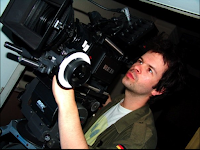 By chance two simultaneous productions
occured which would change my career path in early 2008. One, was a
short film that a friend directed. This friend had received a small
amount of funding (there actually were such things at the time) and
managed to persuade the very talented Robbie Ryan to DP. He also
suggested that Robbie shoot on the Red, which was obviously very
exciting to me on both counts. I was hired as the 2nd AC
(though ended up being the 1st part way through). Unlike
other shoots I'd been on, a technician came with the camera. This
was strange to me but as it transpired, completely necessary.
Although we had spent a lot of time looking at Red manuals and
tutorials, in the heat of a shoot it was very easy to forget where
menus were (Red never being good for menus) and actually no idea what
to do with the Red Drives once they had been shot out. Our
technician would copy these drives onto computer drives overnight
(this seemed very scary and technical). Everything being new I would
spend every spare opportunity memorising the menus, asking questions
about downloading the data and reading about every new firmware
update (which Red would release to make the camera work properly). I
believe we were on firmware 13 at the time.
By chance two simultaneous productions
occured which would change my career path in early 2008. One, was a
short film that a friend directed. This friend had received a small
amount of funding (there actually were such things at the time) and
managed to persuade the very talented Robbie Ryan to DP. He also
suggested that Robbie shoot on the Red, which was obviously very
exciting to me on both counts. I was hired as the 2nd AC
(though ended up being the 1st part way through). Unlike
other shoots I'd been on, a technician came with the camera. This
was strange to me but as it transpired, completely necessary.
Although we had spent a lot of time looking at Red manuals and
tutorials, in the heat of a shoot it was very easy to forget where
menus were (Red never being good for menus) and actually no idea what
to do with the Red Drives once they had been shot out. Our
technician would copy these drives onto computer drives overnight
(this seemed very scary and technical). Everything being new I would
spend every spare opportunity memorising the menus, asking questions
about downloading the data and reading about every new firmware
update (which Red would release to make the camera work properly). I
believe we were on firmware 13 at the time.
Production two happened the week after.
A commercials production company I worked for as a 2nd AC
had decided they'd had enough of shooting 35mm and wanted to try the
Red instead. By chance they had a shoot lined using the Red and they
were wondering if I would be interested in helping. This allowed me
even more experience working with Red in a short space of time.
Throughout the year and into next I'd
moved from being an average/not great 35mm AC to an in demand
AC/Technician working with digital cameras. Ironically this gave me
more experience on larger 35mm shoots where I became a little better
as digital cameras were being used for certain shots, and by then,
not just Red. I distinctly remember the laughter (myself included)
when a director wanted to use his newly bought Canon 5D2 for a shot
as it shot video (30FPS HARD at that time) – little did everyone
know.
Then something unexpected happened. A
union strike in America had the unintended result of nearly everyone
switching to digital productions for TV overnight. This would change
the way films were made forever. Nobody expected a change to happen
so quickly, least of all Kodak and feature DP's. Over a very small
period of just two/three years 95% of productions had switched to
shooting digitally – crazy to think as 35mm had been used for 95%
of cinemas 100 years. 35mm Productions would 'step down' and
S16/HDCam productions would 'step up'. A perfect storm had happened.
Steven Soderbergh, early adopter.
Obviously there was complete chaos.
Producers, some cinematographers and AC's and especially post
production companies were struggling to make headway into this new
digital world. The 35mm workflow was essentially universal but the
digital workflow would change for every production. And that
uncertainty was confusing for everyone.
And this is where part of the confusion
as to what a DIT does is arises from.
Generally a DIT then would be a
technician for a camera – mostly as AC's were more used to film or
ENG Style Video Cameras – and importantly download the data. AC's
are smart people and very quickly they would come to operate the
camera menus/set-ups themselves. Only the copying of data cards/mags
was now left to the DIT. Backed up data would be sent of to large
post houses, and really dealt with in a similar way to film being
sent to a lab. Not all post houses however had the same set of
skills, which caused issues which will be discussed later.
The first DIT confusion for
producers/production managers was that certain DPs expected the DIT
to have a good understanding of how the camera worked on a sensor
level and be able to offer advice on ASA settings, colour
temperature, exposure etc - things the DP did not need to think about
too much themselves as they had so many other things to do. Other
DP's or AC's were more technically aware of how cameras operated so a
DITs knowledge of finer technicalities was not needed so much in
those cases. Confusion would occur between a need for a data
wrangler and a DIT, but mostly DIT was still a catch-all term.
Classic early DIT set-up
As the downloading of data very quickly
changed from a dark art to 'pretty much anyone with a laptop can do
it' the role of the DIT started to become more cause for concern.
Producers did not really have the time to spend hours working out
what a DIT really did. Like every other crew position they relied on
CV, or word of mouth to ascertain someone's suitability. By this time
everything had turned a bit 'wild west'. Runners or Trainees were
given roles as DITs on some productions. This would be fine for one
job but cause all sorts of problems on others where more technical
knowledge was expected. Soon lots of horror stories would appear
such as cameras not working (in a lot of cases down to user error),
rushes going missing or some DITs thinking their job was a bit more
important than it was. But as operations quickly became simpler and
clearer; cameras easier to use and workflows more generalised
productions inevitably (and rightly) started to employ less
experienced DITs with good results in general.
And this is where Post Houses come in
and the DIT was reborn.
The role develops
It's a myth that shooting film resulted
in a perfect floor to post workflow. From the popularity of Telecine, dailies were always interpreted by operators. From a personal
perspective, as a 2nd AC I recall a DP having stern words
with me after forgetting to write 'Night/Int' on a particular shot.
The TK operator had interpreted this scene as 'DAY/INT' and graded
appropriately. Most instructions were written on Neg Report sheets
but were very vague – 'Good, Strong Blacks', 'Make Warm', 'Cool
Morning' etc. Discussions and tests were shot before hand but
Telecine Operators were very experienced, DP's tended to shoot 'in
camera' so results were usually consistently good. For features most
DPs were used to shooting pre-DI where they pretty much got the
intended look on the day.
Initially many of the filmlabs (like
Kodak) did not want to enter the 'video' market, so pre-existing
boutique, general or new operations dealt with the data from Digital
Cameras. With very inconsistent results. Like the DIT Wild-West there
was a Post Wild-West. Some of the top-end houses produced excellent
results, some of the brand new operations produced excellent results
but many produced very poor results. There were a lot of very poor
results which caused DPs skills to be questioned more than post house
inadequacies. What was so frustrating about the situation was that
very early on, Red had clearly seen the future and actually (via
Assimilate initially) implemented some very clever methods for
maintaining a consistent look from the camera floor to the edit
suite. Unfortunately this look information was not always
successfully passed on, and ironically one of the main reasons for
this confusion was REDs forward thinking. In thinking so far ahead,
they had stubbornly pushed their custom workflow, which was not
compatible with what existed in most production houses. This would
be their Achilles heel and the main reason that to this day people
associate Red with a difficult workflow. In making the camera itself
cheap for the end user, they had licensed many of-the-shelf
components to make this possible and it became clear that this was
actually a unique new way to shoot cinema. The Red was a camera
which was 50% onset cinematography and 50% post cinematography. This
would be where the next revolution in cinematography would be – and
currently is now.
The original Redcine (before X), which was pretty much Scratch!
What Red had done was produce a camera
that shot raw data ie. data/images that would be finalised after
shooting. In real terms this meant that unlike film which can only be
developed once, Red Raw data can be developed again and again –
even years after when the algorithms to do so have improved. But to
do this caused a MASSIVE amount of processing power. A standard
computer from 2007 could take weeks to process this data into useable
images. As a result, only large companies with expensive computers
could turn around dailies quickly enough to please customers. So for
a while, Red processing existed only in the realms of large post
houses. The Red Meta Data sent was often ignored, and to keep later
post costs down, the raw data was transferred to various DPX (some
linear, some log) files for editing/grading. The power of raw was
lost in many cases and results were very variable.
As previously mentioned Red licensed
some technology to help them keep costs down, one of these products
was Red Rocket, a GPU that accelerated the raw data processing. It
was very expensive and it also meant that for years Red were tied
into using it alone, long after computer processing had caught up
(they opened up GPU processing a couple of years ago). But what it
did do then was allow the processing of rushes to be taken out of
Post Houses and onto Set. This would a) give DITs a new lease of
life but more importantly b) further cinematography by giving control
back to the DP. The DP could now authorise rushes before they were
sent to editorial.
Obviously this did not go down too well
with post houses, as they were losing a good chunk of income. For a
while there existed a mix of DITs backing up and transcoding rushes,
syncing sound and delivering dailies. There were also experiments
between continuing as before, or some cases where all rushes were
sent of to a post house. Both outcomes were good. DITs had
re-invented themselves and post houses produced better quality
dailies. Rather than laptops for downloading Red CF cards, 12-Core
Mac Pro Towers were needed. But the lab had arrived onset for the
first time. And that brought about a new set of creative
possibilities.
Arrival of new systems
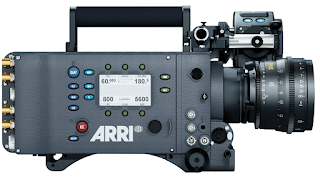 Around then the Alexa arrived. The Red
was suddenly old hat. Arri was known to most cinematographers,
especially in Europe through their range of film cameras. It was well
built, the menus and buttons were in the correct places (being
German), its specs were way ahead of the Red (pre MX) and more
importantly it had been designed to fit into existing workflows.
Almost. It initially shot Log encoded ProRes only (raw to come
later).
Around then the Alexa arrived. The Red
was suddenly old hat. Arri was known to most cinematographers,
especially in Europe through their range of film cameras. It was well
built, the menus and buttons were in the correct places (being
German), its specs were way ahead of the Red (pre MX) and more
importantly it had been designed to fit into existing workflows.
Almost. It initially shot Log encoded ProRes only (raw to come
later).
Nearly everyone could edit straight away with the files it
created (well the 422HQ iteration at least, 4444 being trickier)
except for the fact that everything looked washed out. That was
because the camera encoded the linear sensor as LogC. Log had been
developed for DI technology so was only known within a small field.
To view the images properly as was seen onset a LUT (look up table)
was required in post and a new set of terminology was suddenly
introduced into wider cinematography. Along with Rec709. Now
everyone knows what LUTs are, then it was a mystery. Very few pieces
of software could work with them, usually only very high end
finishing packages like Iridas and Baselight. For the first few
months very convoluted methods were utilised to apply a LUT to
dailies: importing into Final Cut, applying the Nick Shaw LUT,
exporting as ProRes again, importing into Avid then exporting as
DnxHD36 etc. As well as Gluetools, AlexICC etc
Kodak Cineon Log Files for DI
The Great Progression
Original Davinci 2K Plus
A year later one of the greatest
progressions in cinematography arrived (again). Davinci was
a very high end finishing hardware/software package for 35mm
productions. As the Film world (Labs and Kodak/Fuji) had been
decimated by digital Davinci was essentially about to enter
bankruptcy. A small Australian 'converter box' company, Black Magic
Design bought them and then released Resolve as software for £1000,
and to be run on an Apple Mac! This allowed everyone access to a
proper super-high end grading package for the first time. This was
something way beyond the limitations of Apple Color and incredibly
exciting. Other than allowing independent filmmakers using 5Ds and
other DSLRs the ability to use serious post tools, it allowed DITs to
significantly improve the quality (and ease of use) of making daily
deliverables. Everyone was happy.
Davinci Resolve on a Laptop!
In a very short space of time Black
Magic would release a free version of Davinci Resolve and Apple would
concurrently release the Macbook Retina. This combination made it
possible again for anyone really to back-up and create dailies for
commercials and medium budget features on a cheap laptop. Technology
had again expanded the possibilities of cinematography and allowed
into the hands of all.
Very large features were slightly
different. The big Post Houses or the very smart indie operations
had created very powerful datalabs. Essentially they went back to
the concept of overnight dailies. At the end of a shooting day
original camera cards (in some cases drives when a copy was made onset) were sent away, dailies
created and returned the next. Unlike at the beginning of the
digital revolution there was an important difference. The DIT had a
very different role, one very like the real origins (onset video
broadcast engineers). They would sit next to the DP and manipulate
the sensor signal, they would not back-up cards or transcode rushes
(though this would sometimes happen, especially as drives/ports are
becoming so fast). The technology to do this was incredibly
expensive; so expensive in fact, that only the very largest of
Hollywood features could afford to work this way. They would, to all
intents be 'Live Grading'. The equipment to facilitate this would be
expensive LUT boxes made by Truelight/Filmlight/Baselight or Pluto and very expensive software by
Colorfront or Iridas Onset. It's certainly nothing new, 3CP by Gamma
Density had developed their system years ago for using stills camera
images for passing colour information to Telecine Operators for 35mm
shoots.http://www.eetimes.com/document.asp?doc_id=1300609
Livegrade For All.

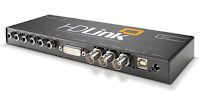 As with everything in the development
of Digital Cinema equipment progression has made prices significantly
cheaper for everyone to access. The latest technology has allowed the
current role of all DITs to develop even further by significantly
assisting DP's to have significant amounts of control over their
images. Namely, through cheap access to Livegrading. Blackmagic
were unsurprisingly involved, but not directly. In 2012 a German
company called Pomfort hacked a very cheap BlackMagic conversion box
– the HDLink.
As with everything in the development
of Digital Cinema equipment progression has made prices significantly
cheaper for everyone to access. The latest technology has allowed the
current role of all DITs to develop even further by significantly
assisting DP's to have significant amounts of control over their
images. Namely, through cheap access to Livegrading. Blackmagic
were unsurprisingly involved, but not directly. In 2012 a German
company called Pomfort hacked a very cheap BlackMagic conversion box
– the HDLink.
They created software, which surprisingly had not
been named this before – Livegrade. All this could be used with
any Macbook computer for around £500. Its genius was to bypass any
capture devices and rely on simple, previously developed technology.
What does a current DIT set-up look
like?
As we are discussing current DIT and
Cinematography equipment and conventions it makes sense to explain
one of the current working practices of this set-up in a little more
depth.
As the Alexa is by far the most used
Digital Camera on features and commercials it makes sense to use it
as an example.
Firstly, the kit and set-up, in
simplified form:
Non Livegrade set-ups would use an HDSDI
output from the Alexa straight to the monitor. This would either show
standard Rec709 signal, or an Alexa Look File (still in Rec709). If
you changed the Gamma setting in the Alexa to Log C the monitor would
display the LogC image. Great for displaying the recorded signal, not
so good for anyone else.
In order to apply a LUT to the monitor
there are various options. For our purposes we will use a Black Magic
HDLink Pro – these cost around £300. To fit this into our current
chain we have it between the camera and monitor. So,
Camera>HDLINK>Monitor.
The HDLINK is not a capture device, all
it does is to alter the signal between the camera output and the
monitor input. In order to manipulate the image you need to connect
it to a computer, any Macbook will do. The free software allows you
to add a single LUT. It connects to your laptop by USB2 (very little
processing) which enables you to change values between the HDSDI
signal.
This software is clunky and slow, and
not really useable other than burning a LUT into the box.
To manipulate the signal live you need
software such as Livegrade. The current version is Livegrade Pro 3.
You can connect any grading panel to the laptop (again by USB2), I
use Tangent Wave's though it's a bit big.
You can now alter Lift, Gamma, Gain,
Saturation and Curve non destructively. Grading from Log is a
massive leap forward from working with Rec709, doing this live
massively increases the options a cinematographer has available to
them. A new tool. But a livegrading system can offer up far more
creative possibilities which were more difficult to achieve in the
past.
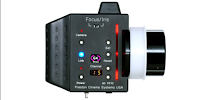 One of the greatest benefits is an
option which was very common with film, but less so until recently
with digital (for various reasons, one being onset monitoring). The
DIT/DP in a Livegrade system will always have a remote iris control.
One of the greatest benefits is an
option which was very common with film, but less so until recently
with digital (for various reasons, one being onset monitoring). The
DIT/DP in a Livegrade system will always have a remote iris control.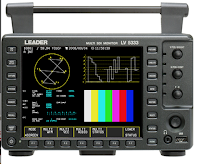 In combination with Livegrade you are offered the ability to 'print
up' or 'print down'. In practice this means you can control where
18% grey lies on your curve. And this can bring out a new
possibility for skintones. To illustrate this imagine your log skin
tones being 30%, you can open up your physical iris 0.9 stops to
roughly 40% and in Livegrade non destructively stop down.
In combination with Livegrade you are offered the ability to 'print
up' or 'print down'. In practice this means you can control where
18% grey lies on your curve. And this can bring out a new
possibility for skintones. To illustrate this imagine your log skin
tones being 30%, you can open up your physical iris 0.9 stops to
roughly 40% and in Livegrade non destructively stop down.
Your
Lutted image will pretty much look the same but you have changed
where your skintones lie on the recorded log signal. This is amazing
for various reasons, for creativity (skin tones do look different at
different points on the curve) and also great for dealing with noise
in shadows. Or vice-versa for adding texture.
Not a great example to be fair. Sorry!
With Lift, Gamma, Gain you have greater
flexibility with colour control. Rather than tint/white balance which
changes the overall image you can change parts of a scene. Highlights
can have warmth added, or taken away while shadows remain the same.
Early versions of Livegrade pretty much
allowed only this flexibility, with the benefit of saving
LUTs/Loading LUTs for various post packages. But there was little
metadata other than CDLs.
Livegrade Pro allows a capture card to
be used. This has two advantages. One is the timecode is referenced
to onset tweaks. Referencing timecode means that other software –
specifically Silverstack XT can read these tweaks. This means that
you have a great guarantee that what you are seeing onset will be
seen in the colourists suite.
 The capture card also allows you to
refer a previous take with a current take. It's difficult to
understate how big a deal this is. Whole projects can be built up
around a film. To illustrate this think of the film Colour Palettes
that appear on various film blogs (colour schemes that various named
films use - http://www.digitaltrends.com/photography/cinema-palettes-twitter-account-color/). Greater control can be used to achieve these, and
maintain consistent skintones throughout. On shoot day 23 you can immediately bring up
a directly cutting scene from day 4 and wipe it across your live
screen etc. Or even shots from the same day, matching two or three
cameras or mis-matching IRNDs (different casts always occur) or throughout
weather changes. Combined with your iris control you have a serious
amount of creativity at your fingertips, all seen live.
The capture card also allows you to
refer a previous take with a current take. It's difficult to
understate how big a deal this is. Whole projects can be built up
around a film. To illustrate this think of the film Colour Palettes
that appear on various film blogs (colour schemes that various named
films use - http://www.digitaltrends.com/photography/cinema-palettes-twitter-account-color/). Greater control can be used to achieve these, and
maintain consistent skintones throughout. On shoot day 23 you can immediately bring up
a directly cutting scene from day 4 and wipe it across your live
screen etc. Or even shots from the same day, matching two or three
cameras or mis-matching IRNDs (different casts always occur) or throughout
weather changes. Combined with your iris control you have a serious
amount of creativity at your fingertips, all seen live.
This can then all be put into a single
document for referring to in post, cdl and 3D LUT. It's staggering how much control
the DP has lost to Post and some options for taking back this control
are essential. So many people shoot and leave it to the grade. This
is no longer enough. By the time your footage has gone to the
cutting room, or even the dailies - if your look is not stamped in
people will forget your intended look. And by that time it is very
difficult to convince people to return to your intended look.
Remember the early days of LogC? That is why so many commercials had
that washed out look – because directors and producers could not
see it any other way after the cut.
How does a DIT facilitate this
system for a DP?
Unsurprisingly every production
requires different methodologies. The reasons for this are usually
down to budget, location logistics, camera system used but
principally to fitting within a DPs method of working. At it's
heart, a DIT is just another tool to help a DP. And like other tools
available they are used in very different ways to achieve the most
suitable photography for the story being told. Because of this a DIT
in addition to understanding the technical aspects of their job have
to understand the political, and in many instances this is far more
difficult. Every DP has a different way of working and every DP has
a different personality. Previous working relationships help
enormously – especially with new technology and thus different
approaches to using that but you have to very quickly adapt to
defining boundaries. It is imperative to understand that you are
being hired to assist the DP. Some DP's like feedback, suggestions
and initiative while others prefer you to do as you are told. It is
important to be impartial and work within the boundaries presented
and understand neither approach is better than another. With
experience it quickly becomes apparent how to approach a single
production.
In general, on a production using
Livegrade - like most other productions a DP will light to a certain
T-stop. Often this would be around 2.8/4 at 800 ASA. Though this
can change, especially for low light scenes and depending on lenses
used so can change throughout the shoot.
Sometimes a DP will be with you for the
entire shoot, sometimes they will spend a percentage with the
director and sometimes they will operate and spend very little time
with you. Responsibilities and expectations will change depending on
how they wish to work.
A simple, one camera setup. A DIT blackout tent would be used in most cases (but it gets very dark in there for photos).
For DITs not used to working with
Livegrade one of the surprising differences is that you will mostly
be in control of the exposure. You will be in charge of a remote iris
for each camera and it is your duty to set and maintain the t-stop.
This is fairly simple if the DP is lighting to a defined stop with
the gaffer in a studio situation. Your duty is to provide the DP
with a good negative, so use of a waveform monitor is essential, as
well as a properly calibrated grade 1 monitor. Some DP's, if not at
your monitor, will allow you to liaise with the lighting department –
usually the gaffer who will often be at the monitor with you. You
can work with them to ensure highlights are not burning out and to
fill any any areas of the image that have no light on them. Unlike
on film, black areas have no information and allow the introduction
of noise. A simple fill can be 'graded down' with a curve to make the
image appear black but still record code values. Quite often you will
print down with Livegrade to maintain a thicker negative if stop
allows.
Some DP's prefer to deal with this
themselves but passing on these small tweaks to a DIT, rather than
loosing any creative control really just frees them to concentrate on
other aspects of the photography.
Exposure filters are also handed over
to the DIT to deal with in most cases. At this point it's
appropriate to mention that you will be in radio contact with the
camera assistants – passing on instructions from the DP, or
exposure/colour/menu instructions from yourself. Mostly your
discussions will be the introduction or removal of ND filters, and
it's vital you understand how these effect the image very quickly.
If shooting outside you still want to maintain a consistent shooting
stop, so if you are shooting at around a 2.8/4 you want to ND up to
achieve this. Again you have Livegrade to print up or down with. It
becomes trickier with constantly changing light conditions, and even
trickier when different lenses are being used.
You have to be aware
of the size and type of lens being used in certain set-ups. If
A-Camera is shooting on a 25mm lens at 2.8 with a 1.8 ND it's not
appropriate to have the same stop on a B-Camera shooting 48fps on a
300mm lens. So you will have to change your ND and stop to give the
focus puller a chance.
Also, if one camera is using a brand new
Leica lens and another is using a 20 year old zoom lens it's probably
not appropriate to have both wide open as the old lens will not work
to its best ability. This can become hectic so detailed notes have
to be taken otherwise you will end up with a very sore head. To give
you an even bigger headache, some cameras have different base ASA
ratings so making calculations to match multiple cameras can be very
tricky (ASA, stop, shutter Angle, FPS, ND, lens size, lens type all
need to be taken into consideration). Other than for artistic
reasons it's not necessary to burden a DP with these as a DIT can do
them - in much the same way a DP does not have to pull focus, operate
a camera, move a light, mark a clapperboard, write negative report
sheets.
USE APPS LIKE P-CAM!
Colour theory is important to
understand. Some DP's keep things simple, others have very elaborate
ways to achieve different skintones. A DP recently wanted to
eliminate magenta from the spectrum as he thought it looked too 'video-ish'. To achieve this he placed colour filters on the camera,
with the opposite filters on the lights. This created a very green image
which he would, in Livegrade time to a 'normal' image. The image
before the colour filters and the end result looked very similar but on
close inspection on a Vector-scope you would notice that magenta had
mostly disappeared and it did look subtly nicer. It was an elaborate
process involving complicated stop and white balance calculations but
the end result looked fantastic. Achieving this without Livegrade,
and the ability to bring up previous shots to grade to –
essentially maintaining a consistent skintone throughout the film
would be very difficult if not impossible without having producers
question the dailies.
Livegrade has freed up DP's time and
allowed a greater flexibility in onset control, and as importantly a
greater quality control on the rushes sent to editorial from set.
What is next?
Who knows. Already most cameras are integrating Livegrade into their onboard software. The process can only get smaller, faster and better. The software can be controlled with WiFi, WiFi that works unlike other manufacturers earlier attempts.
ASC CDLs, LiveGrade and LUTs should all form part of a cinematographers toolkit. Control must be given back to the cinematographer and the 'lab' should return to their world. DPs don't necessarily have to have in depth knowledge of bit-rates, codecs or file formats - DITs can do that for them but maintaining control of an image can be achieved with new tools. So much damage has already happened but pushing for these options on shoots, stamping your authorship on images is more important now than it ever has been. The irony with cameras with so much latitude and deep bit-depth is that they offer up options for post and producers long after a DP has left a project. The final grade is not always the place for offering up your original intentions. Often, long before final colouring takes place others have made decisions often based on what they saw in the edit and this should not continue. The great thing is this actually is now starting to happen but only for the DPs who push for this. The equipment is now so inexpensive that looks can be set, onset in most situations now.
Obviously this article does not cover every aspect of what a DIT does, it's written from a singular perspective and many productions, DITs and DPs work and operate very successfully in different ways. This is good as cinema is meant to full of diversity, that's what creates great images.
`

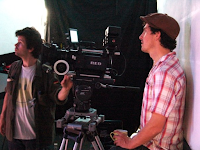



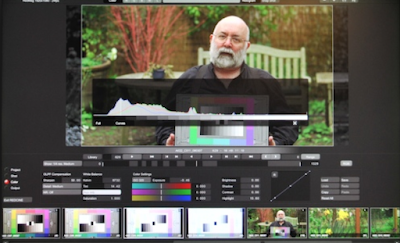
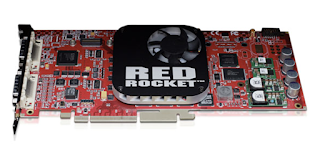









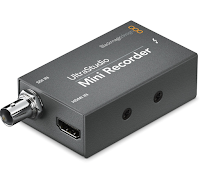

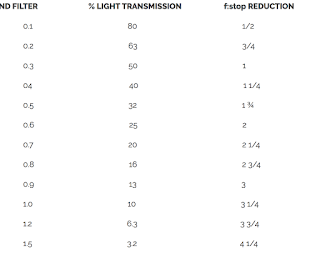
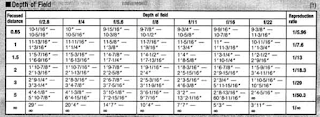
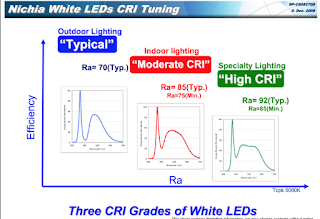
No comments:
Post a Comment